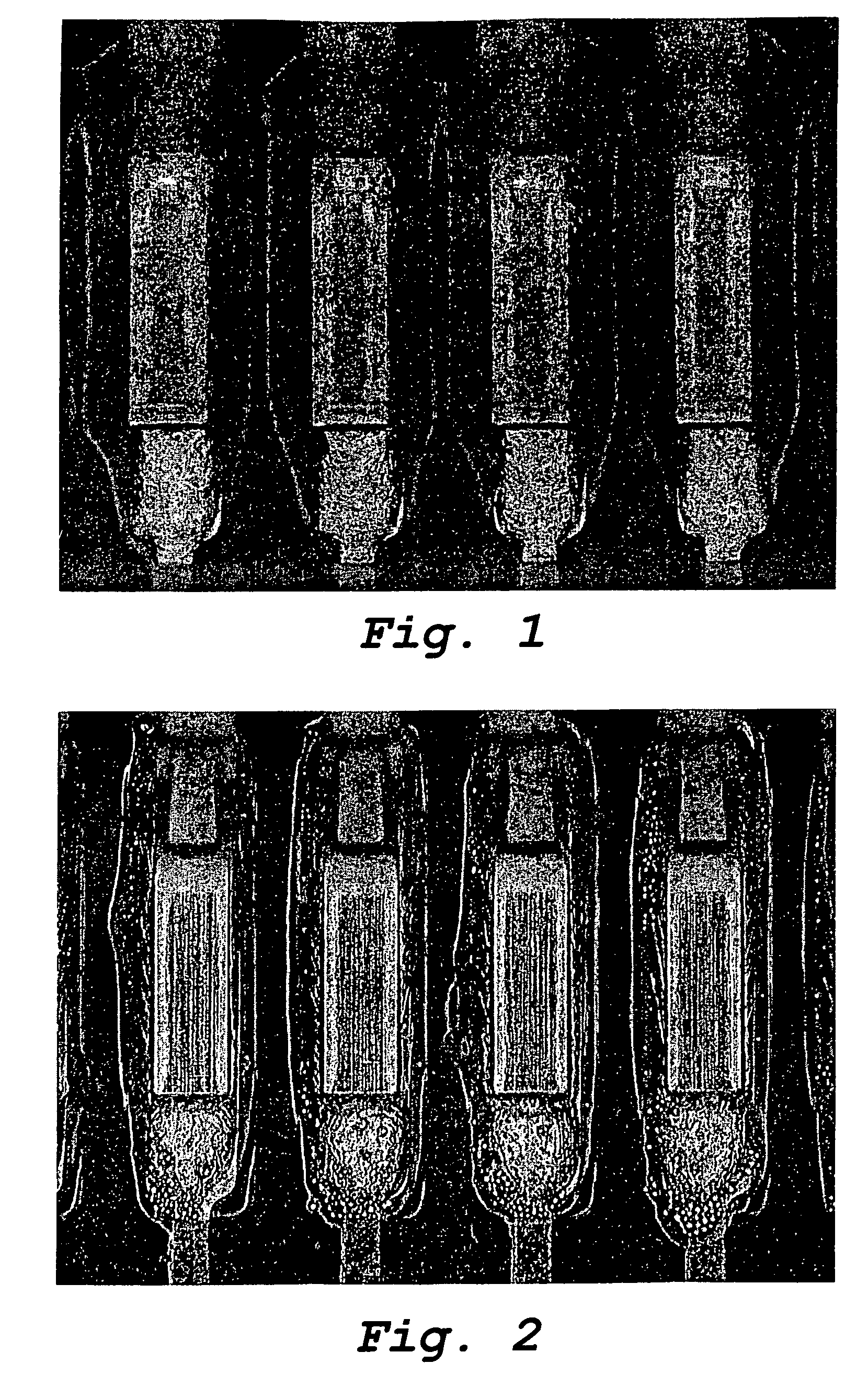Solder paste and printed circuit board
a printed circuit board and paste technology, applied in the field of solvent paste, can solve the problems of reducing bonding strength, affecting the performance affecting the quality of printed circuit boards, so as to achieve the effect of preventing corrosion, reducing melting point, and easy flow
- Summary
- Abstract
- Description
- Claims
- Application Information
AI Technical Summary
Benefits of technology
Problems solved by technology
Method used
Image
Examples
examples
[0053]Sn—Zn based alloy powders and Sn—Ag based alloy powders having the compositions shown in Tables 1 and 2 were obtained by the gas atomizing method. The average particle diameter of these alloy powders was in the range of 10-50 micrometers. These alloy powders were mixed in the mixing ratios shown in Tables 1 and 2, and the resulting powder mixture was blended with a polymerized rosin-based flux which contained diphenylguanidine HBr as an activator and hardened castor oil as a thixotropic agent in alpha-terpineol as a solvent to prepare a solder paste. Tables 1 and 2 also shows the composition of the alloy powder mixture (mixed powder).
[0054]The following properties of the solder pastes were investigated.
[Corrosion Resistance]
[0055]Test piece: A tough pitch copper plate measuring 0.3 mm×10 mm×15 mm was immersed to a depth of 15 mm in a molten solder alloy prepared by heating the powder mixture used for the solder paste to 250° C. to prepare a soldered test piece.
[0056]Test metho...
PUM
| Property | Measurement | Unit |
|---|---|---|
| melting point | aaaaa | aaaaa |
| melting point | aaaaa | aaaaa |
| melting point | aaaaa | aaaaa |
Abstract
Description
Claims
Application Information
 Login to View More
Login to View More - R&D
- Intellectual Property
- Life Sciences
- Materials
- Tech Scout
- Unparalleled Data Quality
- Higher Quality Content
- 60% Fewer Hallucinations
Browse by: Latest US Patents, China's latest patents, Technical Efficacy Thesaurus, Application Domain, Technology Topic, Popular Technical Reports.
© 2025 PatSnap. All rights reserved.Legal|Privacy policy|Modern Slavery Act Transparency Statement|Sitemap|About US| Contact US: help@patsnap.com

